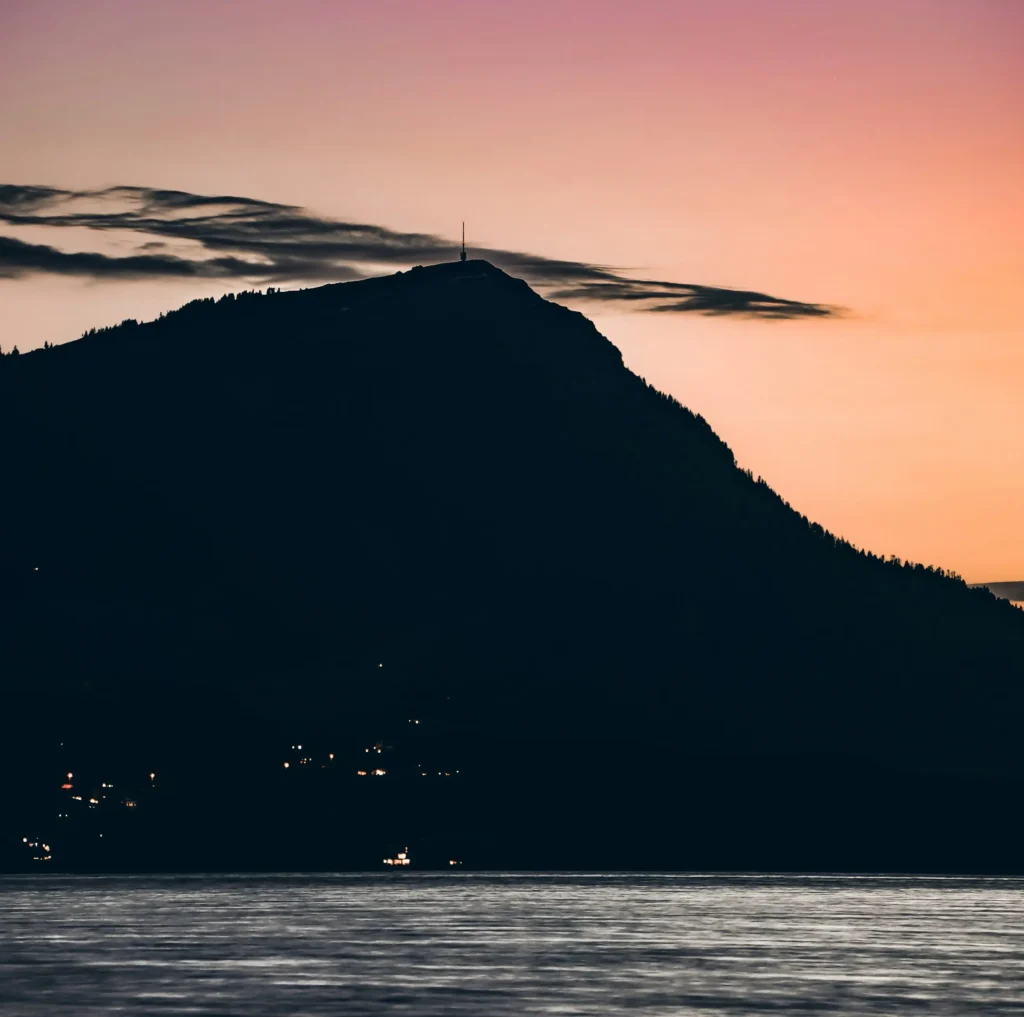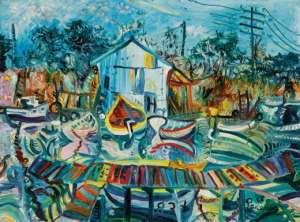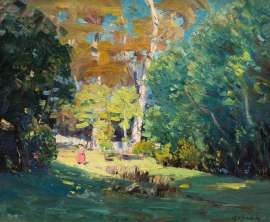Three small paintings, hardly larger than an A4 sized sheet, are among the most valuable watercolours in the world – and one of them is at home in Australia, on display for the public no less. J.M.W. Turner’s views of Mount Rigi and a recent visit to Switzerland’s Queen of the Mountains inspired me to have a closer look.
 |
My relationship with one of Switzerland’s most well known mountains, the Rigi, goes back to 1996 when I climbed it with my Swiss wife Brigitte. The relationship with J.M.W. Turner’s watercolour painting known as ‘The Red Rigi’ came about sometime later when visiting the National Gallery of Victoria in Melbourne. This mesmerising and beautiful work was donated by the always generous Felton Bequest in 1947 and is surely one of the jewels in the collection. |
There are three works of Mount Rigi by Turner, all painted from a number of sketches that the artist produced from his time in Switzerland in late 1841. The other two are referred to as the ‘Dark Rigi’ which is held in a private collection, and the ‘Blue Rigi’ which is now in the collection of the Tate Gallery in London.
This ‘Blue Rigi’ experienced a stormy journey: after many years in private hands in the UK, it was put up for auction in June 2006, selling for the breathtaking price for a watercolour of £ 5.8 million to an international buyer. This caused the then British culture minister David Lammy to intervene to stop the painting from leaving the country – however, a local purchaser had to be found. Tate Gallery director Sir Nicolas Serota pulled out all the stops in a massive effort to raise the funds needed to save the painting ‘for the nation’. Eventually, £ 4.95 million including tax remissions secured the Mountain for the Tate.
Subsequently, the three Rigis were brought together for the first time in an exhibition at the Tate Gallery, together with a number of original sketches in early 2007 (images and details can be viewed at https://www.tate.org.uk/britain/exhibitions/turnerrigi/default.shtm ).
Mount Rigi was one of Switzerland’s first major tourist attractions and remains as popular today as it was in the 19th century, not least because it is very easily reached from the major centres such as Zurich or Lucerne. Though by no means Switzerland’s highest mountain at a mere 1,800 metres, it occupies a majestic position surrounded by Lake Lucerne and Lake Zug, providing magnificent views from the top.
Turner did not climb the Rigi. He was captivated by the imposing shape and the play of light rather than the view from its top, capturing the image from some distance away across Lake Lucerne.
Turner was not the only artist to have been impressed with the ‘Queen of the Mountains’. Leo Tolstoy climbed it in 1857, and describes the Rigi in his story ‘Lucerne’ as ‘from which is obtained one of the most magnificent views in the world …. The lake, iridescent as melted sulphur, and dotted with boats, which left behind them vanishing trails, spread out before my windows smooth, motionless as it were, between the variegated green shores’.
Visiting Rigi in 1880, Mark Twain observed in ‘A Tramp Abroad’ rather tongue-in-cheek ‘We climbed and climbed, and we kept on climbing, we reached about forty summits, but there was always another one just ahead. … It was twelve o’clock and a breezy, cloudless day; the ascent was gradual, and the glimpses, from under the curtaining boughs, of blue water, and tiny sailboats, and beetling cliffs, were as charming as glimpses of dreamland.’
When I return to Switzerland and look from my father-in-law’s balcony, Mount Rigi is again perfectly framed, always defiant, resilient, dependable, self-assured, serene and beautiful, and perhaps like Uluru, it is timeless and will remain long after we are gone. – Article originally published in Australian Art Sales Digest




